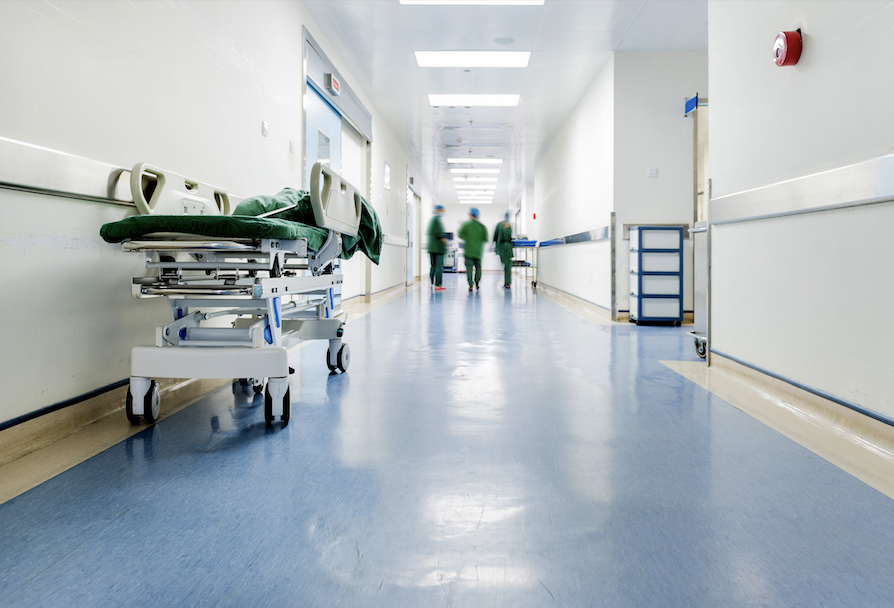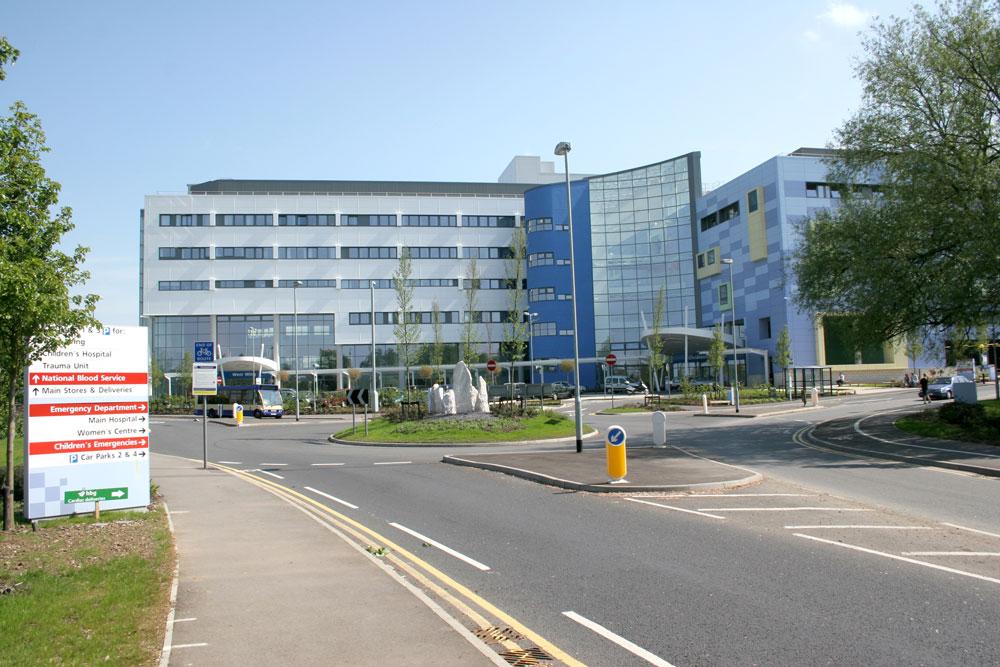On behalf of the Institute of Workplace and Facilities Management (IWFM), Preston Gan asks whether the current state of facilities management in the NHS is ready for the investment of IoT, Big Data and AI
Whether as a patient or as an individual helping our loved ones, families and friends, most of our real-life experience with the current use of technology and information systems used in health and care is not always as positive. As an example, the lack of information about a person residing in a particular region or area is not available because their records are stored somewhere else in the country. Or a person with multiple complex problems often has to repeat the same information many times to different people, as every organisation and professional works with a different system, and a different record. Or, elsewhere, existing systems having multiple logins often creating frustration for staff to do their jobs, leaving people confused and disappointed. Digital technology should be one of the key enablers, rather than a barrier, to delivering excellent care.
The role of technology today has fundamentally changed the way we live and manage our daily lives. Increased technological advances has provided us with greater choices and more control than ever before; whether from how we communicate with each other, the way we travel, shop and pay for things, the way we bank, how we manage our well-being ‘on the move’ to how healthcare is delivered and how we access healthcare services.
There is certainly recognition that digital technology is critical to transforming health and social care services so that care can become more person-centred, creating a positive impact on patient outcomes and patients can be more empowered to participate more fully in their own care.
Relationship between IoT, Big Data and artificial intelligence
The growth and the convergence of the ‘Internet of Things’ (IoT) with ‘Big Data’ and artificial intelligence has opened up a world of possibilities in medicine that will help healthcare professionals realise the anticipated benefits that enhances the workplace to manage and alleviate the clinical burnout that affects a significant proportion of clinicians, allowing them to focus on the core tasks, giving them more time to care for patients and improve clinical outcomes.
To gain a basic understanding of the three elements, IoT is the idea of connecting any physical devices or objects to the internet and to other connected devices. This could mean an extraordinary number of ‘things’ of all shapes and sizes that allow us to connect, collect critical data, analyse and then react to data based on real-time information to enhance performance and prevent losses - most without any type of human input.
To explain the relationship between IoT, Big Data and AI, these connected devices trigger a massive inflow of the different types of ‘Big Data’. Three classifications of data are normally associated with Big Data. Structured data, often categorised as quantitative data, is what most of us are used to working with, data that fits neatly into fixed fields and columns such as databases, spreadsheets CRM or ERP systems, that is often the easiest to search and organise. A much bigger percentage of all data in our world is unstructured data. Unstructured data that is most often categorised as qualitative data, which cannot be processed and analysed using conventional such as text, audio, video, photos, social media content, and satellite imagery, which is difficult to deconstruct. The third classification of data beyond structured and unstructured is semi-structured data which is a mix of both that contains metadata, making it easier to organise. But there is still flexibility in the data such as email messages or a digital photograph.
There is no doubt that it will be immensely difficult to comprehend the vast amount of unstructured data gathered from the millions of sensors via IoT devices and the complexity to process on a real time basis. However, once the raw input is cleaned, structured and integrated well enough to become useful, artificial intelligence will use that processed data to build its intelligence with the necessary learning algorithms to produce your desired output. In essence, you can say that IoT is the senses, Big Data is the fuel and artificial intelligence is the brain to realise the future of a smart connected world.
As an example for patients, devices in the form of wearables, like fitness bands and other wirelessly connected devices like blood pressure and heart rate monitoring cuffs, glucometer, healthcare apps etc. give patients access to personalised attention and real time health data. These devices can be tuned to remind calorie count, exercise check, appointments, blood pressure variations and much more providing patients with actionable insights that will eventually improve the quality and health care they experience.
For clinicians, using wearables and other remote home monitoring equipment embedded with IoT, allows them to keep track of patients’ health more effectively, reducing the length of hospital stay and prevents re-admissions, monitor patients’ adherence to treatment plans or any need for immediate medical attention. IoT enables healthcare professionals to be more watchful and connect with the patients proactively, thereby increased satisfaction due to enhanced patient experience and engagement.
Utilising the benefits of technology
How do facilities managers working within the healthcare built environment utilise the benefits of IoT to enhance the workplace and support our health professionals in providing the best care possible to our patients?
It needs to be understood that real estate for most organisations represents the second highest expense after human resources. Therefore, facilities managers have a direct impact on the productivity on any organisation’s most important asset, their employees. The acceleration of IoT is certainly creating new possibilities for FM by allowing the evolution of intelligent and integrated buildings. IoT data and analytics allow facilities managers to understand what is happening within every aspect of a building, understand how people are using it and oversee the operations undergoing in an automated building environment which will help facilities managers meet demands and drive efficiencies.
The combination of information technology (IT) and operational technology (OT), such as Building Management Systems (BMS), lighting controls, energy monitoring, security and safety systems, transportation for the built environment will provide a digital health care infrastructure with the required connectivity and intelligence, smart controls with the ability to manage, automate and optimise resources and equipment effectively along with the capability to utilise cloud-based digital services.
Patient experience and satisfaction is paramount within healthcare facilities and will only grow in its importance as patients are offered more choices. For example, by using an app installed on their smartphone via environmental sensors, patients can create their own optimal healing environment through individual control over their room temperature, humidity levels and lighting rather than calling on nurses to perform these basic tasks. In turn, this frees nurses up to spend more time on clinical tasks that will improve patient care.
Patient safety presents another top concern. Uninterrupted access to power can mean the difference between life and death. Hospitals need constant, reliable power to feed medical devices. IoT-enabled power management solutions such as electrical panels, connected power meters and power monitoring software can ensure reliable electrical power to critical areas, identify potential issues before a failure occurs, reduce operating theatre downtime and automatically test emergency power supply systems.
IoT across the NHS estate
Apart from monitoring patient health, there are many other areas where IoT devices are very useful in hospitals. IoT devices tagged with sensors are used for tracking real time location of medical equipment like wheelchairs, defibrillators, nebulisers, oxygen pumps and other monitoring equipment. Deployment of medical staff at different locations can also be analysed real time.
As an example, NHS Highland’s Caithness General Hospital in Wick began a trial system to automate the process of bed maintenance through the use of sensors to monitor the status of medical beds and improve access to maintenance data. Keeping tracks of beds which require monthly maintenance checks creates significant administrative burden on staff. The Bluetooth tags and centralised dashboard with real time data make it easy to find the beds and access up-to-date maintenance records, enabling smarter, more informed decisions to be made.
Another example is the transition from Planned Preventative Maintenance (PPM) to Predictive Maintenance where current practices in preventative maintenance seeks to decrease the likelihood of an asset‘s failure through the performance of regular maintenance. Predictive maintenance relies on data to determine an asset’s likelihood of failure before that failure occurs based on condition of the asset and reasonable estimates about how it is used (such as expected operating times). This allow facilities managers to move from a repair to replace model to a predict and fix maintenance model using analysis which relies on data, statistics, machine learning, and AI modelling to make future predictions to improve maintenance and production efficiency.
Moving with the times
Is facilities management in the NHS ready for the investment of IoT, Big Data and AI in its current state? And how can we move ahead with the times?
The facts are clear. The majority of the NHS estate has passed its ‘sell-by’ date with ageing infrastructure, facilities and equipment that are no longer compliant with statutory safety standards. The total NHS’s backlog maintenance bill is estimated at around £6.5 billion. In my view, I believe this presents a significant opportunity for facilities managers within healthcare across the country to make a difference.
Within individual NHS organisations, there could be multiple existing systems associated with facilities management to manage. Perhaps the first initial step is to review and consider which systems or applications are the most essential to retain, which of these are core that is required across the FM environment or specialist, only across a number of FM functions which tend to be single purpose use. Conduct a mapping exercise and cross examine your systems to identify whether there are opportunities for integration, maintain and optimise or potential elimination of others. Do your systems have open protocol?; are they scalable and flexible enough to incorporate the implementation of IoT without the need for further investment of ‘another’ system? and do we have the right digital infrastructure and governance to support the rollout?
If there is an appetite to consider the investment of IoT, we need to understand what problems we are trying to solve. Understanding your final goal before you start is perhaps the most critical. Identify the quick wins to get the tangible return on investment; will it save on labour costs, resources, increased energy efficiency which you can trade off with the savings made to implement IoT? Perhaps an initial IoT project that could be as small as a wireless device added to an existing meter to collect data, makes it easier for facilities staff to get used to understanding data and make informed decisions based on that data. Or pilot an office space that has minimal impact and risks to patients and office staff by installing environmental sensors with an aim to improve indoor environmental monitoring to improve employee well-being and productivity.

Preston Gan is Head of Business Services and Performance at NHS Grampian. He is charged with driving transformational change through the delivery of strategic and operational facilities management. He develops the ‘Informed Client Function’ to enable FM alignment and meet organisation’s business strategy and performance goals.
With over 11 years of FM experience in healthcare, Preston has won multiple industry awards with the most recent ‘FM Professional of the Year’ by IWFM. He contributes to the influence and profile of FM across the UK as IWFM Committee Member for Scotland, Board Member for RICS Scotland, keynote speaker and moderator at various FM conferences and events. Preston is an IWFM Certified member, RICS Chartered FM Surveyor and a Certified Lean Six Sigma Green Belt.





